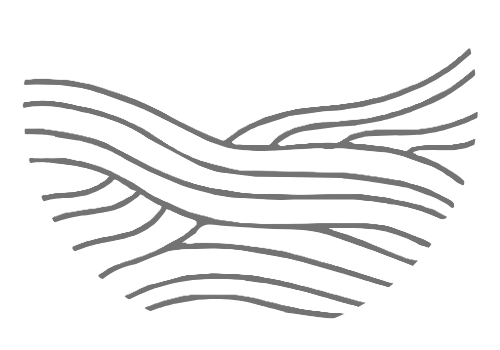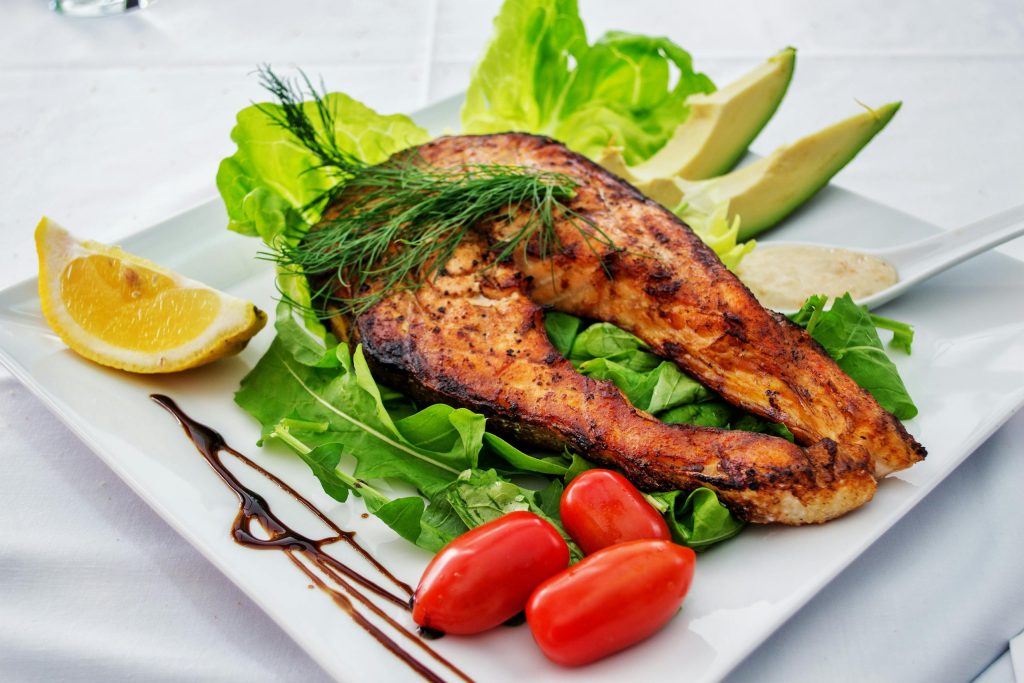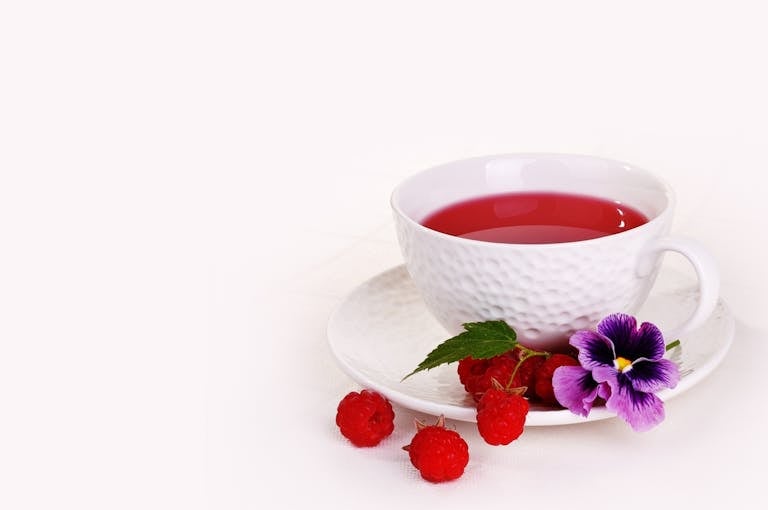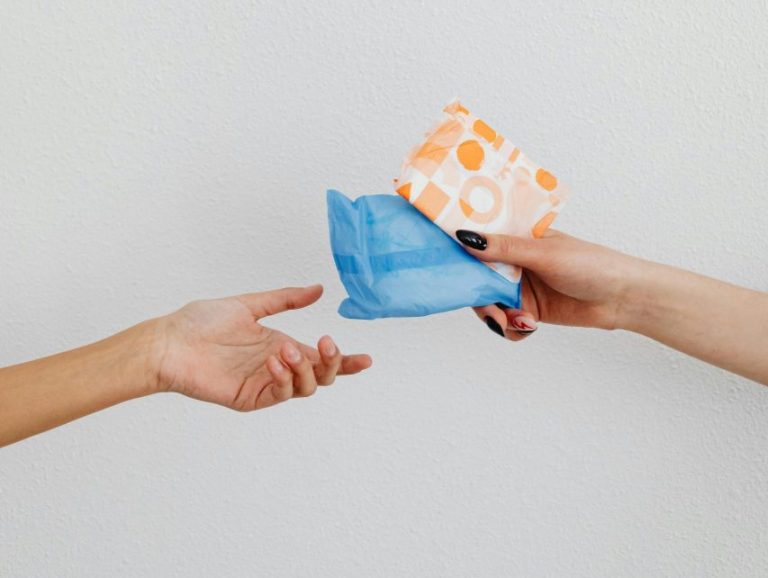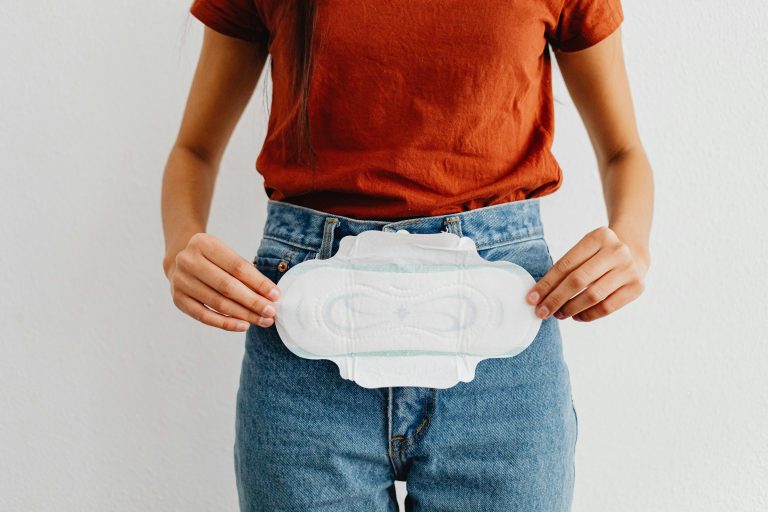I still remember curling up in the fetal position on my bathroom floor during high school, convinced that my insides were staging a full-scale rebellion. Those monthly cramps? Pure torture. And the worst part? I had no idea that what I was eating could have been making things worse!
Fast forward to now, and research shows that nearly 80% of women experience menstrual pain, with 1 in 10 dealing with pain so severe it disrupts daily activities. But here’s the thing – what I’ve learned is that food can be incredibly powerful medicine when it comes to taming those monthly monsters.
When I think about how much time I spent popping painkillers instead of paying attention to what was on my plate… well, let’s just say I wish I could go back and give teenage me a serious nutrition pep talk!
The Science Behind Inflammation and Period Pain
So what’s actually happening when those cramps hit? It’s all about these troublemakers called prostaglandins – hormone-like substances that cause your uterus to contract (hello, pain!) and shed its lining. The higher your prostaglandin levels, the more intense your cramps tend to be.
Here’s where it gets interesting: inflammation makes everything worse by amplifying those pain signals and increasing sensitivity. It’s like turning up the volume on an already blaring speaker. That Geography class I had to muddle through? Absolute nightmare when inflammation was running high.
What I find fascinating is how certain foods can either fan the flames of inflammation or help douse the fire. When I first learned about this connection, it was like discovering a secret superpower. If only someone had told me that my diet of cookies and soda during my period was practically a recipe for maximum pain!
Anti-inflammatory foods work by helping to balance prostaglandin production and reduce oxidative stress in the body. Some research even suggests that women who follow anti-inflammatory eating patterns experience up to 50% less menstrual pain. Now THAT would have been life-changing information for teenage me!
Omega-3 Rich Foods That Fight Period Pain
Let’s start with the heavy hitters in the anti-inflammatory world: omega-3 fatty acids. These nutritional superstars actively compete with the omega-6 fatty acids that can produce those pain-causing prostaglandins.
First up: fatty fish like salmon, mackerel, and sardines. I know, I know – fish might not be the first thing you’re craving during your period, but hear me out. Just two servings of fatty fish per week has been shown to significantly reduce inflammatory markers in the body. When I started incorporating more salmon into my diet, I noticed my cramps weren’t quite as debilitating.
Not a fish fan? No problem! Walnuts and flaxseeds are excellent plant-based sources of omega-3s. I started sprinkling ground flaxseeds on my morning oatmeal about a week before my period was due, and it became one of my go-to preventative strategies.
Chia seeds are another omega-3 powerhouse that deserves a spot in your period-friendly pantry. They’re practically tasteless, so you can add them to smoothies, yogurt, or even make a simple chia pudding. My favorite trick was making a big batch of chia seed pudding with almond milk and cinnamon that I could grab during those days when even standing in the kitchen felt like too much effort.
The key with omega-3s is consistency. These aren’t foods you eat once and magically cure cramps – they work best when they’re regular parts of your diet, especially in the week leading up to your period. Think of them as your nutritional prep team, getting your body ready for what’s coming!
Antioxidant Powerhouses for Cramp Relief
Next up in our pain-fighting food arsenal: antioxidants! These little cellular defenders help neutralize free radicals that contribute to inflammation and pain.
Dark leafy greens like kale and spinach are absolute antioxidant goldmines, packed with vitamins A, C, E, and K. They’re also rich in magnesium (more on that magic mineral later) and calcium, which help relax muscle tissues. I started making sure I had at least one big salad daily in the week before my period, and the difference was noticeable.
Berries – especially blueberries, strawberries, and blackberries – contain compounds called anthocyanins that have impressive anti-inflammatory effects. A study in the Journal of Nutritional Science found that women who consumed more berries reported less menstrual pain. I started keeping frozen berries on hand for quick smoothies during my period, especially on mornings when I needed something gentle but nourishing.
Here’s a delicious revelation: dark chocolate (70% cacao or higher) is legitimately good for period pain! It’s rich in magnesium and contains flavonoids that help reduce inflammation. Just stick to a small amount (about 1-2 ounces) to avoid the sugar that can actually increase inflammation. This was the easiest “health food” for me to incorporate – trust me, no arm-twisting needed to enjoy a daily square of dark chocolate!
These antioxidant-rich foods work best when you eat them regularly throughout your cycle, but I found ramping up my intake about three days before expected cramps helped create a protective effect.
Anti-Inflammatory Herbs and Spices
Let’s talk about some flavor-packed inflammation fighters! Certain herbs and spices don’t just make your food taste better – they can significantly reduce period pain too.
Turmeric and ginger are the dynamic duo of anti-inflammatory spices. Turmeric contains curcumin, which has been shown to fight inflammation as effectively as some over-the-counter medications. I started adding a pinch of turmeric to my smoothies, soups, and rice dishes. Pro tip: always add a little black pepper when using turmeric – it increases absorption of the beneficial compounds by up to 2,000%!
Ginger deserves special attention because it specifically targets menstrual pain. A study in the Journal of Alternative and Complementary Medicine found that ginger was as effective as ibuprofen for reducing period pain. I wish I’d known this back in high school! Instead of those bathroom floor sessions, I could have been sipping ginger tea. Now, I make a simple ginger tea by steeping fresh ginger slices in hot water, adding a touch of honey and lemon.
Cinnamon is another spice with impressive anti-inflammatory credentials. Research has shown it can reduce pain and menstrual bleeding while also helping regulate insulin levels (which can affect hormone balance). Sprinkling cinnamon on oatmeal, yogurt, or in coffee became part of my daily routine during the week of my period.
Peppermint deserves honorable mention too. While technically more antispasmodic than anti-inflammatory, peppermint can help relax the muscles of the uterus, potentially reducing cramping. Peppermint tea became my ad-hoc go to during my period, providing gentle relief when cramps would intensify.
Magnesium-Rich Foods for Muscle Relaxation
If I could go back and tell my teenage self about one mineral for period pain, it would be magnesium. This mighty mineral acts as nature’s muscle relaxant and can significantly reduce the intensity of uterine contractions.
Avocados are creamy magnesium powerhouses that also provide healthy fats and fiber. Half an avocado delivers about 15% of your daily magnesium needs. I started making smoothies with avocado a regular breakfast during my period, and it became something I actually looked forward to during an otherwise uncomfortable time.
Bananas offer a convenient magnesium boost along with potassium, which helps reduce water retention and bloating (another period joy!). They’re perfect for quick energy when period fatigue hits. I started freezing bananas to blend into smoothies, creating a cold, creamy treat that felt indulgent but was actually therapeutic.
Pumpkin seeds might be small, but they’re magnesium giants – just a quarter cup provides nearly 50% of your daily needs! I got into the habit of keeping a small container of roasted pumpkin seeds in my bag for easy snacking throughout the day. They provided steady energy and pain-fighting nutrients when I needed them most.
Studies suggest that magnesium is most effective when consumed regularly throughout your cycle, but increasing intake about 7-10 days before your period is particularly beneficial. Women with the highest magnesium intake report up to 40% less period pain, according to research published in the American Journal of Obstetrics and Gynecology.
Hydrating Anti-Inflammatory Foods
Staying hydrated is crucial during your period, and certain water-rich foods provide both hydration and anti-inflammatory compounds.
Cucumber is 96% water and contains compounds called cucurbitacins that have both anti-inflammatory and analgesic properties. I started keeping cucumber slices in my fridge for easy snacking and added them to my water bottle for a refreshing twist. During my period, proper hydration helped reduce bloating and seemed to make cramps less intense too.
Watermelon is another juicy anti-inflammatory food that contains lycopene, a powerful antioxidant. It’s also rich in magnesium and potassium, making it a triple-threat against period pain. During summer periods, frozen watermelon chunks became my go-to cooling snack.
Pineapple deserves special mention because it contains bromelain, an enzyme that not only fights inflammation but may help relax muscles. Some research suggests it can reduce period pain by blocking the production of pain-causing compounds. I discovered that adding frozen pineapple chunks to smoothies creates a tropical treat that’s actually therapeutic.
These hydrating foods seem to work best when consumed throughout your period, particularly when bloating is an issue. I found that increasing my intake of these water-rich foods helped counteract the water retention that often made cramps feel even worse.
Creating an Anti-Inflammatory Meal Plan
So how do you actually put all this into practice? Here’s a simple 3-day meal plan that I wish I’d had during my teenage years:
Day 1 (Start of period)
- Breakfast: Overnight chia pudding with berries and cinnamon
- Lunch: Salmon salad with dark leafy greens, avocado, and pumpkin seeds
- Dinner: Ginger-turmeric soup with vegetables
- Snacks: Dark chocolate square, peppermint tea
Day 2
- Breakfast: Smoothie with banana, pineapple, spinach, and ground flaxseeds
- Lunch: Buddha bowl with quinoa, roasted vegetables, and walnuts
- Dinner: Turmeric-spiced rice with salmon and dark leafy greens
- Snacks: Cucumber slices with hummus, ginger tea
Day 3
- Breakfast: Avocado toast with pumpkin seeds on whole-grain bread
- Lunch: Mason jar salad with spinach, berries, walnuts, and salmon
- Dinner: Anti-inflammatory pasta with olive oil, garlic, dark leafy greens, and tomatoes
- Snacks: Watermelon chunks, cinnamon tea
I’ve found that starting to incorporate these foods about a week before your period is ideal, but even beginning at the first sign of cramps can help reduce intensity and duration.
While we’re focusing on foods to include, I should mention a few inflammation-promoters to avoid during your period: processed foods, excessive sugar, caffein, and high-omega-6 foods can all worsen inflammation and, by extension, period pain.
Beyond Diet: Complementary Approaches to Period Pain
While food is powerful medicine, I found that combining dietary changes with other strategies created the most effective relief package.
Gentle movement like walking or yoga can actually help reduce cramps by increasing blood flow to the uterus. I discovered that even a 10-minute walk around the block could provide temporary relief when cramps were intense. Just avoid high-intensity workouts during your heaviest days, as they can sometimes make cramps worse.
Stress management is crucial, as stress hormones can amplify pain perception. Simple breathing exercises, meditation, or even just taking five minutes to close your eyes and breathe deeply can help reduce the intensity of cramps. I started using a basic breathing technique – inhaling for 4 counts, holding for 7, and exhaling for 8 – whenever cramps peaked.
If you’re considering supplements alongside dietary changes, magnesium glycinate, omega-3, and vitamin D supplements have research supporting their effectiveness for period pain. Always talk to your healthcare provider before starting any supplement regimen, though.
Speaking of healthcare providers – while diet can significantly help most women with period pain, severe pain that doesn’t respond to these approaches deserves medical attention. Conditions like endometriosis or PCOS can cause extreme period pain that requires additional treatment.
Final Thoughts
I wish I could go back and tell my teenage self that I didn’t have to suffer through those awful cramps every month. That the food I was eating played a huge role in how I felt. That simple changes could have made those dreaded days so much more manageable.
While these anti-inflammatory foods aren’t a magical overnight cure, consistently incorporating them into your diet can lead to significant improvements over time. Many women, myself included, notice changes within 2-3 menstrual cycles after making these dietary shifts.
Remember, your experience is unique, and what works best might take some exploration. Listen to your body, pay attention to patterns, and be patient with the process.
I’d love to hear about your experiences with these foods or any other natural approaches you’ve found helpful! Have questions about incorporating these foods into your diet? Ready to give anti-inflammatory eating a try? Let me know in the comments below!
Want to help your daughter have an easier time with her period? I remember the struggles, and I know how helpless it can feel having to suffer through painful periods. That’s why I’m passionate about helping moms and their daughters finding effective, wholesome and natural ways to navigate these symptoms with confidence and care. She doesn’t have to suffer. In my coaching program, I will work with you to create a personalized support plan combining gentle nutrition tips, simple lifestyle adjustments, and natural comfort measures that work.
Let’s make this journey smoother – for both of you. Schedule a discovery session with a coach to explore how we can help your daughter feel more comfortable and confident during her period. My approach focuses on education and practical solutions that fit seamlessly into your family’s lifestyle.
